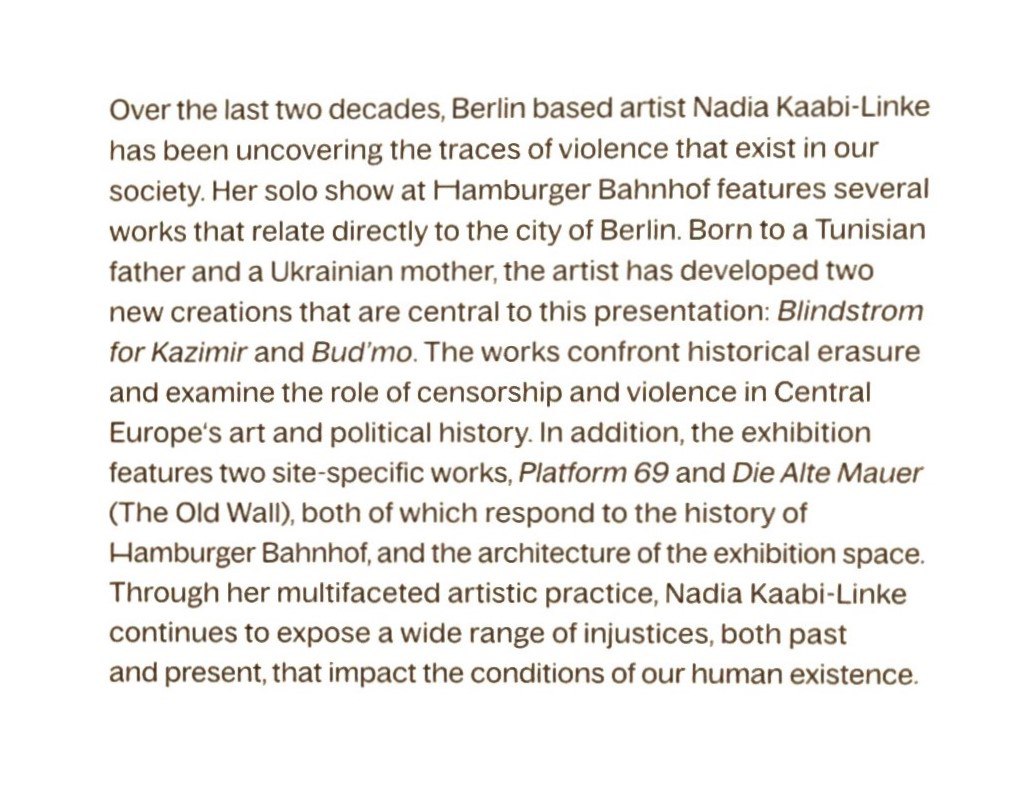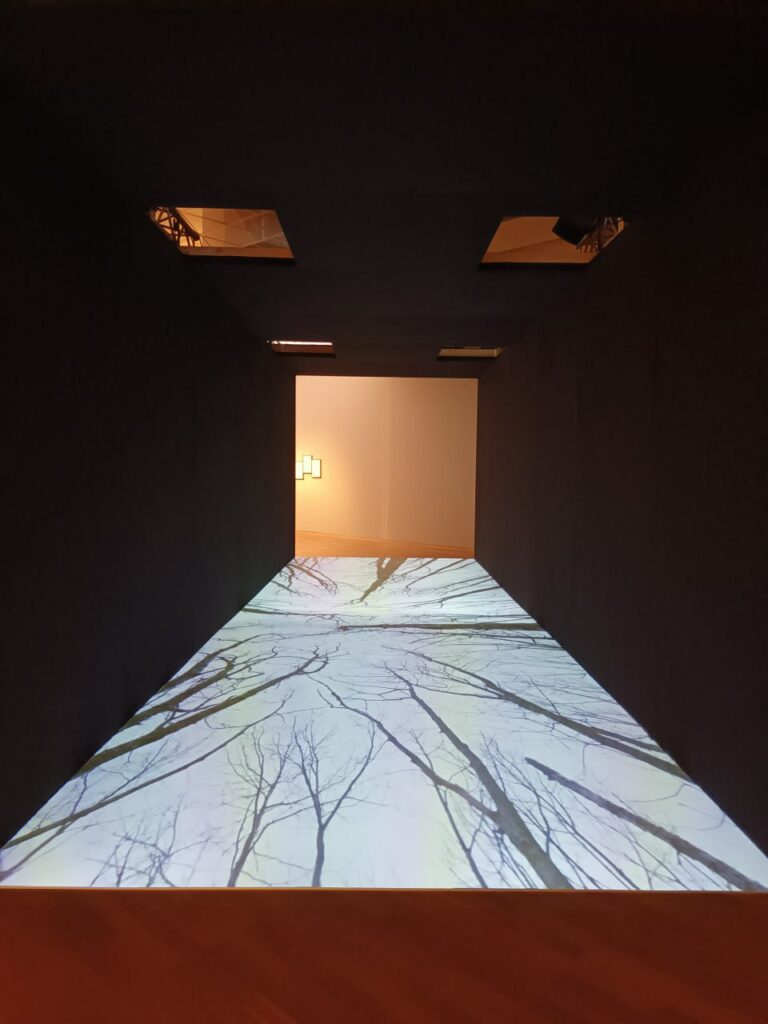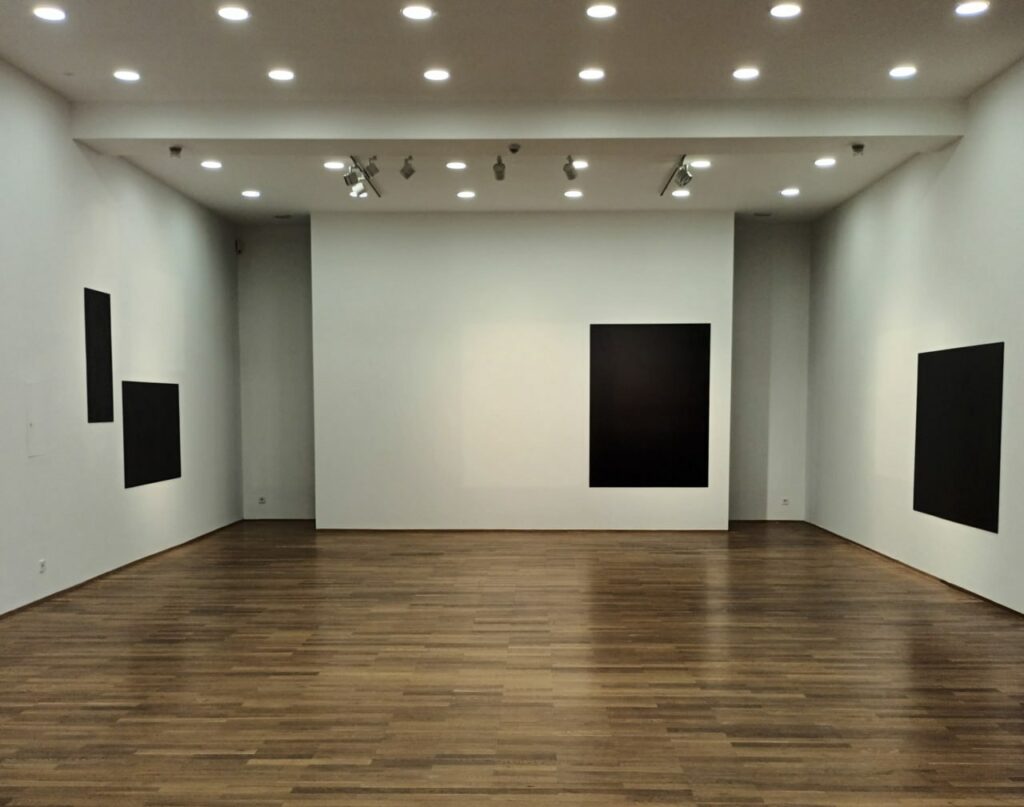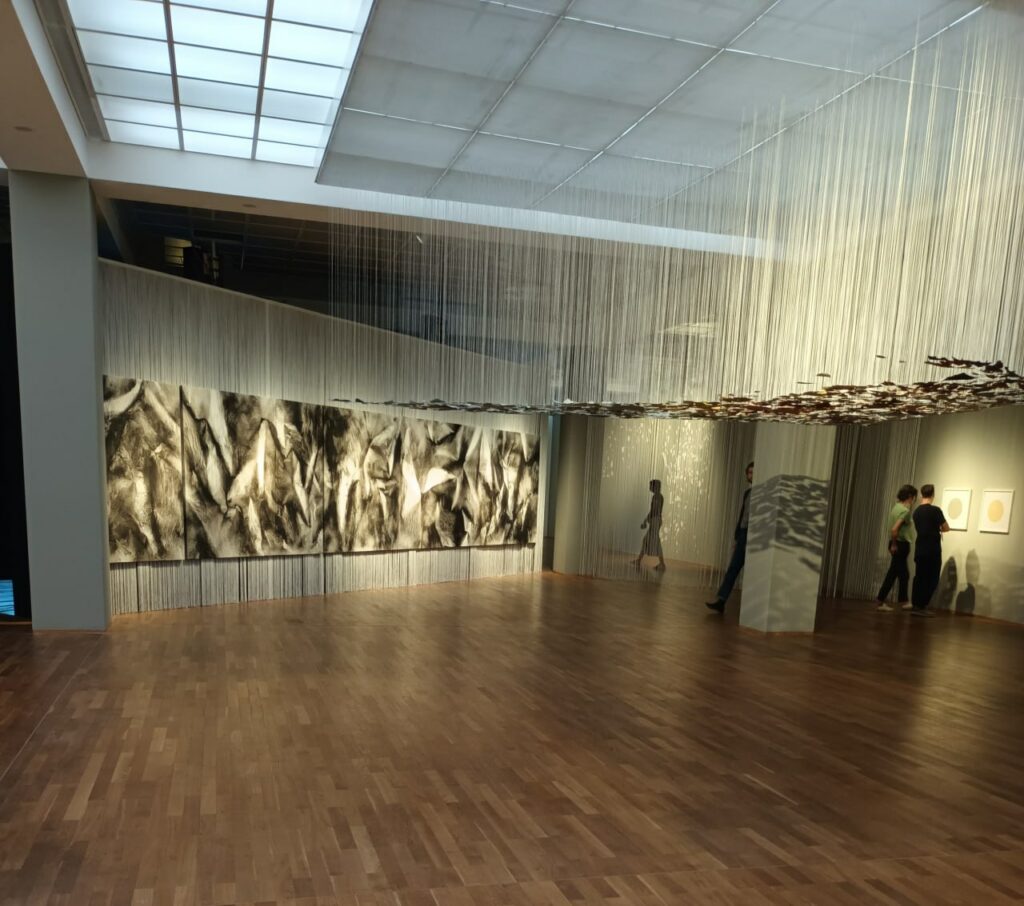Curators: Sam Bardaouil and Daria Prydybailo
In her solo exhibition at Hamburger Bahnhof, Seeing Without Light, Nadia Kaabi-Linke shows works representing two decades of artistic creation:

As one of the exhibition curators, Sam Bardaouil, explains in the catalogue, Kaabi-Linke’s “work explores a broad range of histories whose repercussions are still strongly felt in the lived reality of many today.” In the same publication, Paul Ardenne emphasizes the close connection between the artist’s work and “real situations, current events, and specific contexts,” addressed “in a gentle, subtle, never authoritarian manner.”
The artist adds: “I understand historical objects as a kind of raw material that is almost malleable. … I approach the past through leftovers found in the present time: fragments, bits, and pieces that are still there yet almost forgotten or overlooked. That which seems unimportant to the degree of becoming invisible is what attracts my attention.”
In addition to the work referencing the city of Berlin, Ukraine – now and then – features prominently in the exhibition, explored in new and challenging ways. The video installation Bud’mo, for Kaabi-Linke, “is a new way of using video in an immersive and performative installation. We filmed a slow camera ride through the forest, with the camera pointing at a 90-degree angle towards the sky. In the installation, we project the image onto the floor, and the visitors will walk over it as if they were walking through a forest” – “eyes cast down.” This “is the typical gesture of commemoration … but they see what someone would see if they looked up into the sky.”

In Blindstrom for Kazimir, Kaabi-Linke engages with paintings that were meant to be destroyed during Soviet times because they were accused of formalism or because the painters or the people depicted had fallen from grace. These paintings, however, survived in the secret collection (Spezfond) of the National Art Museum of Ukraine and elsewhere, albeit in bad condition. Kaabi-Linke’s “intervention focused on reproducing all the details of the damages as reliefs on black panels that did not show but made the traces visible.” These “tactile panels do not show much, but people can touch them and try to feel what was going on.” Thus, Blindstrom for Kazimir – “a kind of key to the exhibition” (Kaabi-Linke) – is a multisensory experience inviting active interaction on the part of the visitors.

Blindstrom for Kazimir presents obstacles that the viewer has to conquer – occasionally (but not when we visited the exhibition) with the help of “visually impaired or blind mediators describing artworks that are not present” (Kaabi-Linke). This play with the perennial questions of visibility/invisibility and showing/not showing as well as with the complex relationship between the past and the present is extraordinarily multi-layered: visually impaired mediators describe paintings that cannot be seen; visitors, following these descriptions, create in their imagination images that may, or may not, resemble the original while simultaneously touching the remnants of the damages inflicted on the originals and reproduced here as reliefs.
By doing so, visitors communicate with both the artwork and the relationship between the artwork and the original painting through the sense of touch and encounter art in a new and complex way that can be reduced neither to the visual nor to the tactile experience. Alternatively, they may project their imagination on the white panels adjacent to the black panels thus creating their own images.
The remaining artworks shown in this exhibition are equally thoughtful engagements with the legacies of the past, inspired, it seems, by the idea that merely rendering visible what is supposed to be invisible is an insufficient artistic procedure. Something more, something different is required than merely documenting the aftermath of violent encounters to trick viewers into engagement not only with the artwork but also with the conditions it is meant to represent.

Nadia Kaabi-Linke, Seeing Without Light, is at Hamburger Bahnhof, Nationalgalerie der Gegenwart, Berlin, until 24 March 2024. More information: https://www.smb.museum/en/museums-institutions/hamburger-bahnhof/ exhibitions/detail/nadia-kaabi-linke-seeing-without-light/
See also Nadia Kaabi-Linke, Seeing Without Light, edited by Sam Bardaouil and Till Fellrath for Nationalgalerie – Staatliche Museen zu Berlin (Milano: SilvanaEditoriale, 2023): https://www.silvanaeditoriale.it/libro/9788836655168
Photographs taken at the exhibition for strictly informational and non-commercial purposes (c) Frank Möller.
